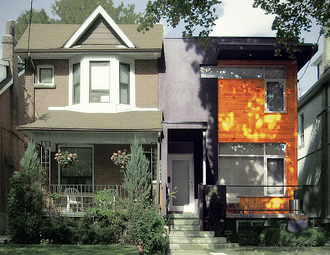Originally published Friday, July 19, 2013 at 8:05 PM
The Seattle Times
The rule of thumb used to be that new homes were more expensive than older homes, but no longer is that always the case.
Q: When buying a home, is it better to buy new or used?
A: For some buyers, an older home holds charm, history and character. For others, the idea of a brand-new home that has never been lived in is much more appealing.
The rule of thumb used to be that new homes were more expensive than older homes, but no longer is that always the case. One reason is that, as land costs have increased, lot sizes have shrunk. And even though material costs continue to climb, today’s construction is cheaper due to engineered woods and the use of drywall instead of plaster.
A potential buyer looking for a home in one of Seattle’s more desirable inner-city neighborhoods will find, on average, larger lot sizes and homes that cost more than entry-level homes in a new subdivision in the outlying areas.
In addition to factors such as commute times and school systems, there are some distinct advantages and disadvantages to consider as you decide whether a newer home or an older one is right for you.
Advantages of older homes
Older homes have stood for decades and sometimes for centuries, weathering many storms. The Seattle area is known for its genuine Craftsman homes built with meticulous attention to detail.
An older home is more apt to have a larger lot size, with room to potentially accommodate a garage or a backyard cottage, depending on local regulations. Zoning changes are much less likely in older established neighborhoods, which reduces the chances that you’ll ever be surprised by how your neighborhood is developed.
An older home may have enchanting design and detail features that aren’t found in a modern house, as well as mature trees and landscaping. And older neighborhoods are often well-developed and may have local coffeehouses and shops nearby.
Drawbacks of older homes
Obviously, you’re likely to have more maintenance-related issues with an older home — unless it has been recently remodeled or upgraded. When considering an older home, ask about the age of the heater, water heater and pipes, as well as the electrical system. You’ll want to know if the home might soon be in need of major repairs or upgrades.
Many older homes in established Seattle neighborhoods have less square footage. It is likely they will have a smaller garage, closets and windows.
Advantages of new homes
In most cases, your warranties ensure that you won’t face major repairs or replacements for at least 10 years. Many of today’s most-popular conveniences are standard with a new home, including built-in dishwashers and microwave ovens, and wiring for security systems and other home technology.
New homes are more energy efficient — they feature insulation in walls, ceilings and floors, as well as double- and sometimes triple-pane windows, all of which help to reduce energy costs.
When buying in a new-home development, there are often several floor-plan choices. In some cases, you have a choice of interior features like cabinets, countertops and paint colors.
Drawbacks of new homes
Most new-home developments have some kind of neighborhood association that restricts exterior appearance and other considerations. It can take years for the vegetation, including shade trees, to mature in a new development.
New houses settle — it happens everywhere, regardless of the type of soil, and can cause cracks in foundations, walls and doorframes.
Perhaps the biggest drawback is the likelihood of a longer commute, since — other than condominiums — most new housing is being built outside of metropolitan areas.
Identifying your top priorities will help determine whether a new home or an older home is the right choice for you and your family.
HomeWork is the weekly column by the Master Builders Association of King and Snohomish Counties’ Remodelers Council about home care, repair and improvements. If you have questions about home improvement, send them to homework@mbaks.com.
 Facebook
Facebook
 X
X
 Pinterest
Pinterest
 Copy Link
Copy Link
